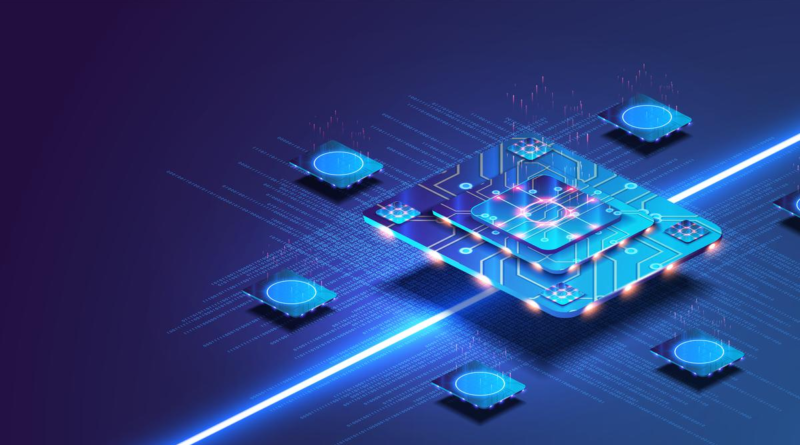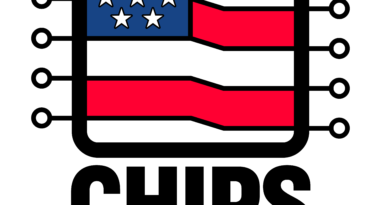What is the technology behind manufacturing a semiconductor chip? | Explained – The Hindu
To enjoy additional benefits
CONNECT WITH US
Updated – April 10, 2024 11:35 am IST
Published – April 08, 2024 08:30 am IST
For representative purposes. | Photo Credit: iStockphoto
The story so far: Semiconductor chip manufacturing capabilities are currently limited to very few regions in the world. With supply chain disruptions during the pandemic and recent geopolitical tensions, many companies and countries, including India, have realised the importance of investing in chip manufacturing infrastructure. The TATA group has partnered with Taiwan’s Powerchip Semiconductor Manufacturing Corporation (PSMC) to set-up a 300mm wafer fabrication plant in Gujarat. It will roll out its first 28nm chip in 2026. Two assembly and test plants in Gujarat and Assam have also been recently approved by the Government of India.
A semiconductor has properties between a conductor (which conducts electricity) and an insulator (which does not). In its purest form a semiconductor is a very weak conductor of electricity. However, its electrical properties can be changed by adding small amounts of certain substances called ‘dopants’. By taking a pure semiconductor and carefully injecting certain parts with specific dopants, complex circuits can be ‘printed’ on the semiconductor.
Also read: The need to overhaul a semiconductor scheme
The process is crudely analogous to creating an intricate work of art on a paper or a wall, by using a bunch of stencils and spray paints of different colours. The stencils are called ‘masks’ in the industry and the paint is analogous to the dopant.
The transistor, one of the earliest electronic components to be built using a semiconductor, is an extremely versatile device. In its most popular form it can function as an electronic switch. A typical semiconductor chip can have millions/billions of these interconnected switches that work together to perform various logical and computational operations.
A transistor can also function as an amplifier (to amplify the weak signal received by your cell phone) and is an integral part of circuits that generate and process high frequency signals (such as those required in wireless communication technologies). Today all these different avatars of the transistor are routinely packed into a single semiconductor chip (such as the WiFi chip in your mobile).
The transistor demonstrated how a single device could be built out of a piece of a semiconductor. ‘Printing’ multiple devices onto a single piece of a semiconductor to create entire circuits was the next leap. Both these breakthroughs laid the foundation for the semiconductor revolution and have been aptly recognised by Nobel Prizes (in 1956 and 2000).
Technology has progressed at a relentless pace since the semiconductor chip was first conceptualised more than six decades ago. Newer manufacturing technologies have been introduced at a regular cadence. The level of miniaturisation of the semiconductor has increased by orders of magnitude. Sticking with the stencil analogy this is mainly due to the stencils being able to etch smaller and more intricate patterns. There have been equally impressive gains in the switching capability of the transistors. They are able to switch on-and-off faster (more computations per second) and with lesser power consumption (longer battery life and lesser heat dissipation).
The industry has used labels like ‘45nm’, ‘28nm’ and ‘16nm’ to introduce each new manufacturing technology. ‘nm’ is short for nano-meter and refers to an extremely small unit of length equal to one billionth of a meter. These numbers convey the level of miniaturisation that is achievable using a particular technology (so smaller is better). Though not always accurate, you can think of this number as representing the dimensions of single transistor. While traditionally electronic circuits have been laid out flat on the semiconductor, researchers are increasing looking to capitalise on the third dimension (height). As the length and breadth of a transistor switch decreases, increasing its height can help ensure reliable performance. Stacking entire circuits on top of one another is another way to continue to shrink semiconductor chip sizes.
A semiconductor chip is manufactured much like a postage stamp. A sheet of stamps is printed on a piece of paper and then each individual stamp is cut out. Similarly, an array (typically 300-400) of chips are printed on a circular piece of semiconductor (called a wafer in industry parlance). This is then diced to create individual chips. A larger wafer size allows more chips to be printed on a single wafer which makes chip production faster and cheaper. Wafer sizes used in the industry have constantly been increasing. The current state of art is 300mm which is approximately 12 inches (this refers to the diameter of the wafer). Efforts are ongoing to move to a 450mm wafer size. While moving to a larger wafer size has its technical challenges and capital expenses, it has proven to be economical in the long run.
Once the wafer has been diced into chips, each individual chip has to be packaged in a protective covering. Tiny wires have to be routed from the device to the boundary of the package. Some of these wires supply power, while other are used for feeding in and reading out signals and data. A chip also has to be tested — this includes verifying its functionality and stress testing (subjecting the chip to high temperature and voltages) — to ensure reliability during its lifetime. All this is performed in an assembly and test plant.
Also read: Explained | Mapping India’s chip design ecosystem
India has had a thriving chip design industry since the 1990s. Due to the magic of computer aided design it is possible to design a semiconductor chip entirely in software. The process of specifying the functionality of a chip, translating this functionality to electronic circuits, validating the circuits, optimising for speed, power consumption and size, can be done by a team of skilled engineers sitting at their desktops. The final design is abstracted into a file and sent to a fabrication plant for manufacturing. It’s a bit like designing an entire graphic novel on your laptop and then sending the pdf to your publisher for printing.
India’s foray into semiconductor manufacturing will benefit from the existing ecosystem for chip design which was fuelled by a steady supply of electronics and computer engineers. Semiconductor manufacturing being an essentially inter-disciplinary endeavour, could present opportunities to a wider array of professionals such as process and control engineers, data scientists, material scientists, physicists and chemical engineers to contribute meaningfully to this industry.
The author is with Texas Instruments
Text and Context / semiconductors and active components / technology (general) / The Hindu Explains
BACK TO TOP
Terms & conditions | Institutional Subscriber
Comments have to be in English, and in full sentences. They cannot be abusive or personal. Please abide by our community guidelines for posting your comments.
We have migrated to a new commenting platform. If you are already a registered user of The Hindu and logged in, you may continue to engage with our articles. If you do not have an account please register and login to post comments. Users can access their older comments by logging into their accounts on Vuukle.


